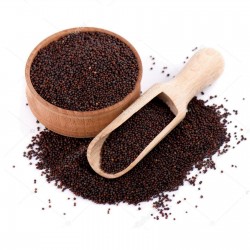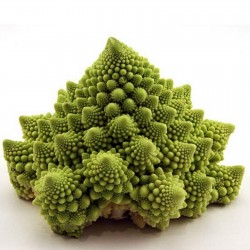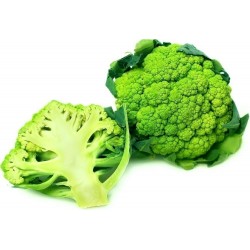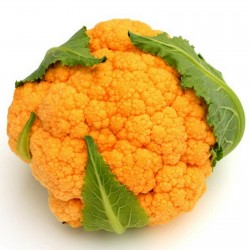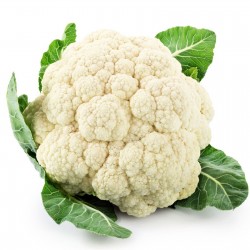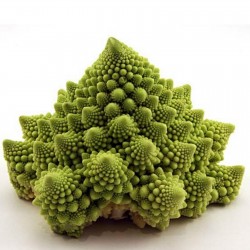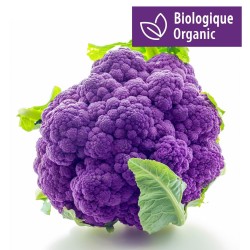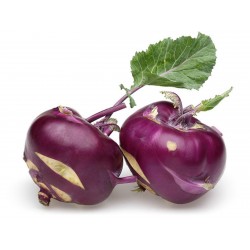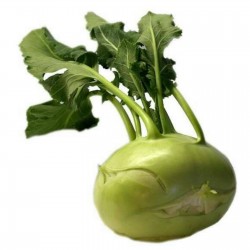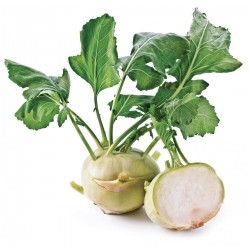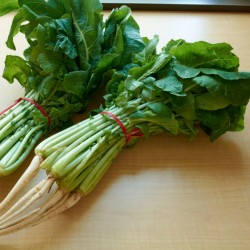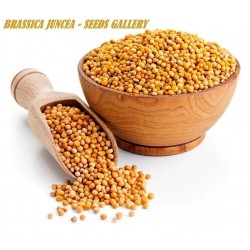
Semințe de muștar chinezesc...
Pret
1,35 €
SKU: MHS 131
Seeds Gallery Com,
5/
5
<h2><strong>Semințe de muștar chinezesc (Brassica juncea)</strong></h2>
<h2><span style="color: #ff0000;"><strong>Preț pentru pachetul de 180 (1g), 900 (5g) semințe.</strong></span></h2>
<p style="color: #222222; font-size: 14px;" class=""><i><b>Brassica juncea</b></i>, de obicei<span> </span><b>muștar brun</b>,<span> </span><b>Muștar chinezesc</b>,<span> </span><b>Muștar indian</b>,<span> </span><b>muștar de frunze</b>,<span> </span><b>Muștar oriental</b><span> </span>și<span> </span><b>muștar vegetal</b>, este o specie de<span> </span>planta de muștar.<br><br>Mustarul brun este o planta mai mare decat mustarul alb, atingand 1 m inaltime. Frunzele acestuia sunt late si rotunjite la baza, subtiindu-se spre varf. Florile sunt mai mici, si de asemenea si pastaile fructelor (3-5 cm lungime). Pastaile sunt netede si bombate, continand pana la o duzina de seminte. Pastaile de mustar trebuiesc recoltate inainte de a exploda, adica atunci cand sunt aproape complet dezvoltate, dar nu coapte.<br><br>Utilizari culinare<br><br>Partea comestibilă : Semintele (1 - 2 mm diametru), de culoare bruna, intunecata, frunzele si tulpinile.<br><br>Mustarul brun, sub forma de seminte, poate fi folosit drept condiment ca atare. Iuteala semintelor este complet distrusa la gatit, si de aceea trebuiesc adaugate cat de tarziu posibil, in cazul in care se doreste un gust iute<br>Mustarul brun apare in unele retete africane, indiene, chinezesti si japoneze.<br><br>Frunzele se folosesc la gatit, iar indienii folosesc nu numai frunzele, ci si semintele si tulpinile, mai ales in Punjab si Gujarat. Pakistanezii folosesc condimentul similar. In India si Pakistan se gateste “Saarson da saag” (“frunze de mustar”) flosind tulpinile si frunzele plantei. Tulpinile groase sunt folosite pentru a prepara un gem de muraturi indiene (“achar”) si chinezesti (“zha cai”).<br>Frunzele si tulpinile de mustar brun sunt folosite in bucatariile chinezeasca si japoneza, in preparate stir-fry, sau murate. In sudul Chinei frunzele sunt fierte cu tamarind, ardei iuti uscati si carne gatita, ramasa de obicei de la una dintre mesele din ziua anterioara.<br><br>In India, in statele Gujarat, Orissa, Bengal, Bihar, Jharkhand, Chhatisgarh, Assam dar si in Bangladesh, localnicii folosesc la gatit uleiul de mustar, care se poate prepara atat din seminte de mustar alb si negru, cat si brun. Acest ulei are o aroma puternica si iritanta, care aduce cu cea a hreanului, un gust putin iute si cu accente de nuca. Indienii incing acest ulei inainte de a gati, uneori pana la punctul in care incepe sa fumege, ca sa-i reduca partial mirosul si gustul, ambele puternice. Aceste temperaturi ridicate pot insa distruge continutul sau de acizi grasi omega 3, facandu-l nesanatos. Din cauza folosirii sale si ca unguent pentru masaj, in Occident este adesea etichetat “pentru uz extern”.<br><br>Descrierea condimentului : Semintele uscate nu au nici un fel de parfum, dar dupa ce sunt mestecate o vreme elibereaza un gust iute-patrunzator.<br><br>Mustarul brun este mult mai iute decat cel alb, dar mai putin decat cel negru.<br>Semintele de mustar nu au nici o aroma; gustul lor este iute.<br><br>Pregatire si depozitare : Semintele intregi pot rezista extrem de mult, daca sunt depozitate corect. Pudra de mustar se pastreaza in locu racoros, la adapost de umezeala si lumina. Origine : Mustarul este originar, probabil, din zona Mediteranei.<br><sup id="cite_ref-GRIN_1-0" class="reference" style="font-size: 11.2px;"></sup></p>
<table cellspacing="0" cellpadding="0" border="1">
<tbody>
<tr>
<td colspan="2" width="100%" valign="top">
<p><span style="color: #008000;">Sowing Instructions</span></p>
</td>
</tr>
<tr>
<td valign="top" nowrap="nowrap">
<p><span style="color: #008000;">Propagation:</span></p>
</td>
<td valign="top">
<p><span style="color: #008000;">Seeds</span></p>
</td>
</tr>
<tr>
<td valign="top" nowrap="nowrap">
<p><span style="color: #008000;">Pretreat:</span></p>
</td>
<td valign="top">
<p><span style="color: #008000;">0</span></p>
</td>
</tr>
<tr>
<td valign="top" nowrap="nowrap">
<p><span style="color: #008000;">Stratification:</span></p>
</td>
<td valign="top">
<p><span style="color: #008000;">0</span></p>
</td>
</tr>
<tr>
<td valign="top" nowrap="nowrap">
<p><span style="color: #008000;">Sowing Time:</span></p>
</td>
<td valign="top">
<p><span style="color: #008000;">all year round</span></p>
</td>
</tr>
<tr>
<td valign="top" nowrap="nowrap">
<p><span style="color: #008000;">Sowing Depth:</span></p>
</td>
<td valign="top">
<p><span style="color: #008000;">1 - 1,5 cm</span></p>
</td>
</tr>
<tr>
<td valign="top" nowrap="nowrap">
<p><span style="color: #008000;">Sowing Mix:</span></p>
</td>
<td valign="top">
<p><span style="color: #008000;">Coir or sowing mix + sand or perlite</span></p>
</td>
</tr>
<tr>
<td valign="top" nowrap="nowrap">
<p><span style="color: #008000;">Germination temperature:</span></p>
</td>
<td valign="top">
<p><span style="color: #008000;">18-20 ° C</span></p>
</td>
</tr>
<tr>
<td valign="top" nowrap="nowrap">
<p><span style="color: #008000;">Location:</span></p>
</td>
<td valign="top">
<p><span style="color: #008000;">bright + keep constantly moist not wet</span></p>
</td>
</tr>
<tr>
<td valign="top" nowrap="nowrap">
<p><span style="color: #008000;">Germination Time:</span></p>
</td>
<td valign="top">
<p><span style="color: #008000;">1-4 weeks</span></p>
</td>
</tr>
<tr>
<td valign="top" nowrap="nowrap">
<p><span style="color: #008000;">Watering:</span></p>
</td>
<td valign="top">
<p><span style="color: #008000;">Water regularly during the growing season</span></p>
</td>
</tr>
<tr>
<td valign="top" nowrap="nowrap">
<p><span style="color: #008000;"> </span></p>
</td>
<td valign="top">
<p><br><span style="color: #008000;">Copyright © 2012 Seeds Gallery - Saatgut Galerie - Galerija semena. All Rights Reserved.</span></p>
</td>
</tr>
</tbody>
</table>
<script src="//cdn.public.n1ed.com/G3OMDFLT/widgets.js"></script>
MHS 131 (1g)





